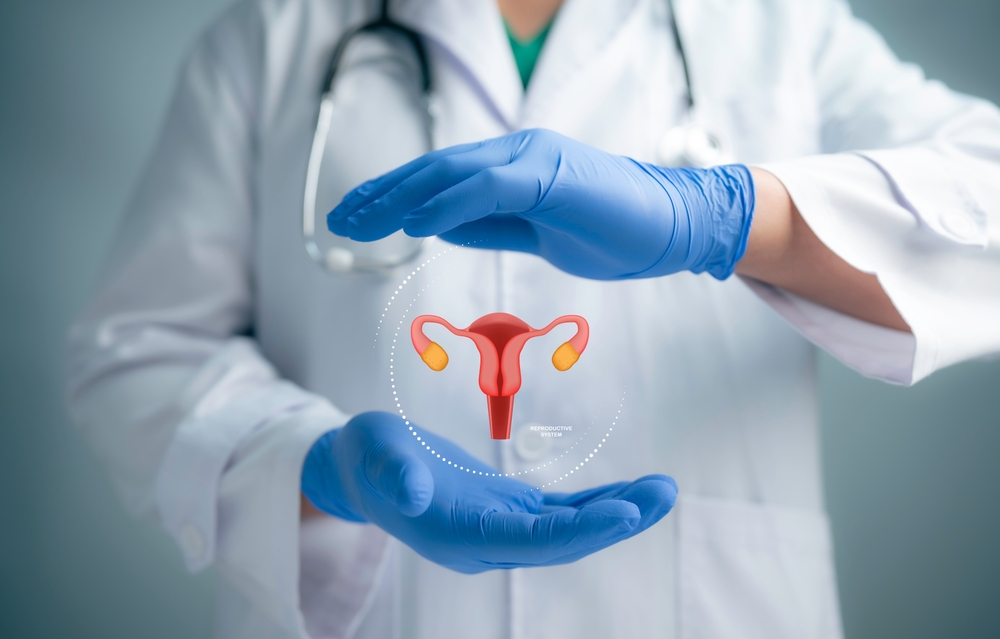Introduction
Polycystic Ovary Syndrome (PCOS) is one of the most prevalent endocrine and metabolic disorders affecting women of reproductive age, with an estimated global prevalence of 6% to 20% depending on diagnostic criteria (Teede et al., 2023). Clinical manifestations include irregular menstruation, hirsutism, truncal obesity, acne, and alopecia. The disorder is multifactorial, involving genetic, metabolic, and environmental components. PCOS significantly impacts women’s reproductive, metabolic, and psychological health, warranting a comprehensive diagnostic and management approach.
Purpose
This paper outlines current evidence-based diagnostic and treatment strategies for PCOS. The syndrome is associated with insulin resistance, dyslipidemia, obesity, infertility, and increased risks for type 2 diabetes and cardiovascular disease (Fauser et al., 2022). Early identification and personalized management strategies can mitigate long-term complications.
Common Clinical Findings
Women with PCOS typically present with oligomenorrhea or amenorrhea, hirsutism (facial or truncal hair growth), acne, androgenic alopecia, and weight gain. Psychological manifestations include anxiety, depression, and body image distress (Li et al., 2022). Patients with elevated BMI are at higher risk for endometrial hyperplasia and carcinoma due to prolonged unopposed estrogen exposure (Teede et al., 2023).
Expanded Metabolic Findings
- Insulin resistance leading to hyperinsulinemia and hyperandrogenism.
- Dyslipidemia, with elevated LDL and triglycerides and low HDL.
- Chronic inflammation, reflected by elevated CRP and homocysteine levels.
- Obesity, often central or truncal.
Diagnostic Workup
Diagnosis requires meeting at least two of the three Rotterdam criteria (ESHRE/ASRM, updated 2023):
- Oligo- or anovulation
- Clinical or biochemical hyperandrogenism
- Polycystic ovarian morphology on ultrasound (≥12 follicles measuring 2–9 mm or ovarian volume >10 mL)
Laboratory Tests
- Hormonal profile: LH, FSH, LH/FSH ratio (>2:1), total testosterone, free testosterone, SHBG, DHEA-S, progesterone.
- Metabolic profile: fasting insulin, fasting glucose, HgbA1c, lipid panel.
- Thyroid and adrenal screening: TSH, free T4, prolactin, 17-OH progesterone.
- Other tests: Vitamin D, AMH, and cortisol levels for broader evaluation.
Table 1. Typical Laboratory Ranges in PCOS Evaluation
| Test | Normal Range | Common PCOS Findings |
| LH/FSH Ratio | 1:1 | >2:1 |
| Total Testosterone | 15–70 ng/dL | >70 ng/dL |
| DHEA-S | 35–430 µg/dL | >430 µg/dL |
| Fasting Insulin | <10 µIU/mL | >15 µIU/mL |
| HgbA1c | <5.7% | 5.7–6.4% (Prediabetes) |
| Triglycerides | <150 mg/dL | >150 mg/dL |
Treatment Options
-
Lifestyle Modifications (First-Line Therapy)
Lifestyle modification remains the cornerstone of PCOS management. The 2023 International Evidence-Based Guideline recommends a 5–10% weight reduction to improve ovulation, insulin sensitivity, and metabolic profile (Teede et al., 2023).
Dietary Recommendations:
- Mediterranean or DASH diet emphasizing whole grains, vegetables, lean proteins, and healthy fats.
- Limit refined carbohydrates and sugary beverages.
- Consider intermittent fasting or low-glycemic index meal patterns for insulin control.
Exercise Guidelines:
- At least 150 minutes/week of moderate-intensity aerobic activity.
- Incorporate resistance training 2–3 times per week to improve insulin sensitivity and muscle mass.
Behavioral Support:
- Structured programs with counseling improve adherence and outcomes.
- Encourage participation in PCOS-specific support groups.
-
Pharmacologic Interventions
Metformin:
- Mechanism: Improves insulin sensitivity and restores ovulatory cycles.
- Dose: 500 mg daily, titrated up to 1500–2000 mg/day.
- Side effects: Gastrointestinal discomfort, B12 deficiency.
- Nursing education: Take with food, monitor renal function, reassess HgbA1c and B12 annually.
Spironolactone:
- Mechanism: Blocks androgen receptors, reduces hirsutism.
- Dose: 25–100 mg daily.
- Side effects: Hyperkalemia, menstrual irregularity.
- Nursing education: Avoid pregnancy during use, monitor potassium and blood pressure.
Oral Contraceptives:
- Mechanism: Suppress LH, reduce androgen production, regulate menses.
- Preferred: Low-androgenic formulations (e.g., drospirenone-containing).
- Side effects: Risk of thromboembolism; contraindicated in smokers >35 years.
GLP-1 and GIP Receptor Agonists (e.g., Semaglutide, Tirzepatide):
- Mechanism: Enhance insulin secretion, suppress glucagon, promote weight loss.
- Evidence: Shown to improve insulin sensitivity and reduce BMI in PCOS (Garvey et al., 2023; Jastreboff et al., 2022).
- Nursing education: Counsel on injection technique, potential nausea, and signs of hypoglycemia.
Myo-Inositol (Complementary Therapy):
- Evidence suggests improved ovulatory function and insulin sensitivity (Zhang et al., 2023).
- Not FDA-approved; use as adjunctive therapy with medical supervision.
Nursing Implications
- Provide education on medication adherence and lifestyle changes.
- Monitor for side effects and lab abnormalities.
- Offer emotional support for anxiety or depression.
- Encourage weight tracking and regular menstrual diaries.
- Collaborate with interdisciplinary teams for long-term follow-up.
Conclusion
PCOS is a multifaceted disorder requiring individualized, evidence-based management. Lifestyle interventions, pharmacologic therapy, and emerging agents such as GLP-1/GIP receptor agonists collectively improve reproductive and metabolic outcomes. Nurses play a pivotal role in patient education, monitoring, and empowerment, ensuring holistic care across the lifespan.
References
- Fauser, B. C., et al. (2022). Pathophysiology, diagnosis, and treatment of PCOS: Current perspectives. Nature Reviews Endocrinology, 18(3), 155–170.
- Garvey, W. T., et al. (2023). Effects of tirzepatide on metabolic parameters in women with PCOS. Journal of Clinical Endocrinology & Metabolism, 108(5), 1234–1242.
- Jastreboff, A. M., et al. (2022). Tirzepatide once weekly for the treatment of obesity. New England Journal of Medicine, 387(3), 205–216.
- Li, X., et al. (2022). Psychological and metabolic burden of PCOS: A systematic review. BMC Women’s Health, 22(1), 455.
- Teede, H. J., et al. (2023). International evidence-based guideline for the assessment and management of PCOS. Human Reproduction, 38(2), 214–230.
- Zhang, Y., et al. (2023). Myo-inositol supplementation improves insulin resistance and ovulatory function in PCOS: A meta-analysis. Frontiers in Endocrinology, 14, 1123456.

